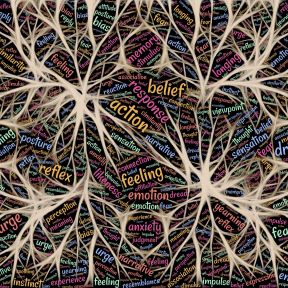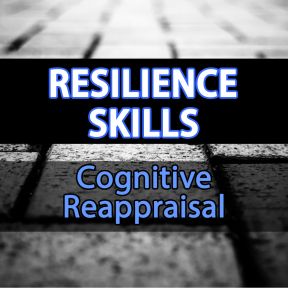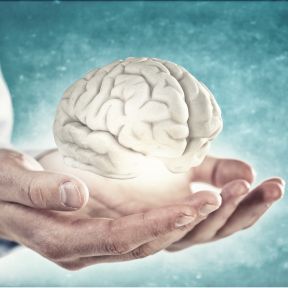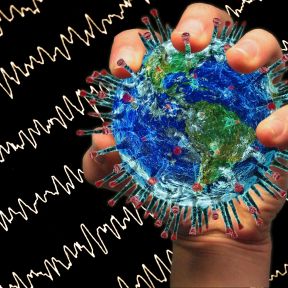
How the mind works is through something called Neuroplasticity. The brain sends messages to the body via neurons. The brain has the ability to create networks and build on these, changing them by continually updating the information we take in from what we experience, observe, and conclude as the truest reality we believe as so. The brain’s ability to evolve is amazing. It has the ability to change, to go to different regions and build new in such a region. In some cases when brain damage happens this is what happens over time. Our brains are adaptable. We can change how our brains respond to what we experience. It is a choice.
Look up neuroplasticity! Learning about it will give you insights. If we understand how our bodies work, then we can learn how to change our lives through how we think and what we do.
There is something else that is interesting, that is often overlooked. All humans are unique to who they are, but we do have similarities. One is how the mind works and processes. We all have jobs we do, and have different positions within those jobs. But underneath what we do, there remains “the who we are.” When you look at the world as a whole and then when you think of this you realize how complex humanity is.
How then can we change the way things are? We need the world to change. I think it begins with each of us first. Then it will ripple outward. We can’t live in fear, we need hope and happiness. An understanding of what it is to be human beings. We need to communicate.
If we think only of how huge the world is, it’s overwhelming. If our efforts are scaled down to us as individual human beings, who support one another this is doable. It becomes contagious. Think of when the world has been shifted for a better course, it was not perfect but the world was impacted changes happened.
The way things are can only last just so long before change is needed.
The importance of neuroplasticity can’t be overstated: It means that it is possible to change dysfunctional patterns of thinking and behaving and to develop new mindsets, new memories, new skills, and new abilities. The following is from Psychology Today. https://www.psychologytoday.com/us/basics/neuroplasticity I found this easy to understand.
Contents
The Science of Neuroplasticity

Neuroplasticity encompasses how nerve cells adapt to circumstances—to respond to stimulation by generating new tendrils of connection to other nerve cells, called synapses, and to respond to deprivation and excess stress by weakening connections.
Neuroplasticity underlies the capacity for learning and memory, and it enables mental and behavioral flexibility. Research has firmly established that the brain is a dynamic organ and can change its design throughout life, responding to experience by reorganizing connections—via so-called “wiring” and “rewiring.” Scientists sometimes refer to the process of neuroplasticity as structural remodeling of the brain.
Does neuroplasticity occur throughout life?
The brain changes most rapidly in childhood, but it’s now clear that the brain continues to develop throughout life. At any time, day-to-day behaviors can have measurable effects on brain structure and function. For example, a well-known study of British taxi drivers found that memorizing the city streets led to changes in the memory center, the hippocampus, and that those who had driven for longer had more expansion in the hippocampus. These changes in middle age highlight the role of neuroplasticity in learning across the lifespan.
What is neurogenesis?
Neurogenesis refers to the creation of new brain cells. Scientists long believed that the brain was not capable of producing new neurons, but modern research has revealed that certain regions of the brain, particularly the hippocampus, are capable of generating new cells throughout adult life.
How do neurogenesis and neuroplasticity work together?
article continues after advertisement
Neuroplasticity in Everyday Life

The ability of the brain to change and grow in response to experience enables people to bounce back from setbacks and adversity—to be resilient. They can bend without breaking.
The disruption of neuroplasticity by severe stress or adversity is characteristic of such conditions as depression and post-traumatic stress disorder. There is quite literally a loss of synapses. In those disorders, people get stuck in neural ruts of negative thinking/feeling/behaving or fear-based memories.
All psychotherapy is intended to foster resilience; the goal is to help people examine distressing feelings and experience and redirect them into more functional patterns, restoring cognitive and behavioral flexibility.
Aging is thought to decrease resilience through the cumulative detrimental effects of stress on neuroplasticity. The dynamic capacity of the brain to rewire itself in response to experience makes a case for lifelong stimulation as a way to maintain optimal brain health and to decrease the risk of dementia and degenerative disorders like Alzheimer’s disease.
Can the brain rewire itself after an injury?
People who have endured traumatic brain injuries have revealed the remarkable capacity for the brain to change and heal. The brain can move critical functions from a damaged area to a healthy one, or recreate connections that were lost.
One powerful example is former U.S. Representative Gabrielle Giffords, who was tragically shot in the head in 2011. She could not speak following the incident, but in the years since, music therapy helped Giffords to recover the ability to express herself.
What is phantom limb syndrome?
After a limb is amputated or lost, most people continue to feel sensations in that body part. They often feel pain, but they may also experience sensations such as being touched or wearing clothing. This fascinating phenomenon is due to neurons that continue to transmit sensory information about the body part that they previously controlled.
Due to brain plasticity, the amount of neural “real estate” devoted to a particular body part can increase or decrease. Sometimes this happens quickly; for example, losing a middle finger can lead neighboring fingers to soon take over that territory. Other times this happens slowly or not at all, as in the case of people whose phantom limbs persist for decades.
Can therapy change the brain?
How do I develop cognitive flexibility?
How to Stimulate Neuroplasticity

It is not only possible but necessary to use your mind and your body to reshape your brain. Enhancing synaptic connectivity through any of a variety of means actively promotes cognitive and mental health and blunts the impact of negative stimuli.
One of the most powerful ways to open up “windows of plasticity” in the brain is physical activity. Aerobic exercise helps the brain as much as the heart. In the brain, it stimulates the release of the substance known as brain-derived neurotropic factor (BDNF), which sets in motion the growth of new synaptic connections and bolsters the strength of signals transmitted from neuron to neuron.
BDNF helps pave networks of neuronal correction, promoting mental and behavioral flexibility. Stress is known to weaken expression of BDNF. Studies show that walking an hour a day, 5 out of 7 days a week, increases brain matter in the hippocampus, the seat of learning and memory.
All drugs known to alleviate depression stimulate the release of BDNF and other biological molecules that promote nerve cell growth and neuroplasticity. Many other nonpharmacologic methods have been shown to directly stimulate and maintain neuroplasticity. They include:
- Engaging in positive social interactions
- Participating in novel activities
- Engaging in play
- Being in enriched and stimulating environments
- Practicing and repeating positive activities—even mentally rehearsing them
- Engaging in mental training strategies such as mindfulness meditation
- Developing a sense of purpose in life.
How does BDNF facilitate neurogenesis?
The proteins responsible for regulating the processes of cell birth and cell death in the brain are known as neurotrophic factors, one of which is BDNF. When a neuron obtains an adequate amount of these proteins during development, it survives, while neurons that do not receive enough die. As these proteins are not abundant, neurons must compete for them during development and even into old age.
Consequently, decreased levels of BDNF have been associated with neurodegenerative disorders such as Parkinson’s disease, Alzheimer’s disease, multiple sclerosis, and Huntington’s disease. Higher levels are associated with improved cognitive functioning, mental health, and memory.
How does exercise stimulate neurogenesis?
Rigorous exercise can be especially beneficial for neurogenesis and memory. One study found that three weeks of high-intensity cycling and five weeks of aerobic exercise improved cognitive functioning and increased levels of BDNF. Another found that BDNF levels increased with aerobic exercise and that this corresponded with a small increase in hippocampal volume as well.
Can I rewire my brain?
Essential Reads

6 Ways Your Brain Makes You Who You Are
The richness of our mental and behavioral repertoires out in the world parallels the anatomical complexity of our brains.

MIT Study May Explain How Adult Brains Create New Memories
A recent MIT study shows that millions of silent synapses exist in adult brains—a discovery that may unlock how adults are able to continually learn and form new memories.

You may be familiar with the physical benefits of intermittent fasting. But were you aware of the benefits to mood?

3 Easy Ways to Help Your Brain
These three tactics may be key to the healthy rewiring of your brain.
Recent Posts

5 Science-Based Tips to Boost Self-Motivation
Tchiki Davis, Ph.D. on December 13, 2022 in Click Here for Happiness
Simple strategies to boost your motivation.

Stop Looking for Your Authentic Self
David Hanscom MD on December 13, 2022 in Anxiety: Another Name for Pain
Even though we are a blank slate at birth, we are programmed by our environment to be what everyone else says we should be. That is who we are and is our authentic self.

New Research Indicates Learning Can Take Place Without Neurons
Eric Haseltine Ph.D. on December 2, 2022 in Long Fuse, Big Bang
A game-changing study on associative learning in plants may spark further research on non-neuronal cognition.

What Effect Does Gamma Brainwave Enhancement Have?
Shireen Jeejeebhoy on November 28, 2022 in Concussion Is Brain Injury
Gamma brainwave enhancement shows promise in treating Alzheimer’s and resetting microglia in brain injury. This neurostimulation therapy needs more human study.

More Than Silver Linings: Resilience, Awe, and Perspective
Jeff Thompson Ph.D. on November 21, 2022 in Beyond Words
Life’s not all rainbows, butterflies, and unicorns. Practicing cognitive reappraisal is a realistic, easy, and healthy resilience practice.

The Click of Life
Timothy A Carey Ph.D. on November 18, 2022 in In Control
The click is the heralding of fresh perspectives and the announcing of new insights.

How Relationships Change the Brain
Gina Simmons Schneider Ph.D. on November 17, 2022 in Frazzlebrain
Healthy relationships can lower stress and help you cope better with trauma.

Purpose: The Ultimate in “Use It or Lose It”
Stephen Sideroff Ph.D. on November 16, 2022 in Path of Optimal Living
Are there steps you can take to boost your health and extend your life span?

Solve Mental Pain to Resolve Physical Pain
David Hanscom MD on November 8, 2022 in Anxiety: Another Name for Pain
There is no separation of mind and body. They are a unit. Mental threats have to be addressed in order to decrease physical symptoms. You cannot escape your thoughts.

Best wishes! Pejj Nunes
💜 It’s a Two Way Street EveryOne; the “body” also “sends” to the “brain” via the heart EveryBody
nisi mortuus nec neque nolite vicit 🤭🤫🤐
http://www.ericberne.com
…💛💚💙…
LikeLike